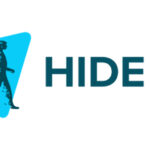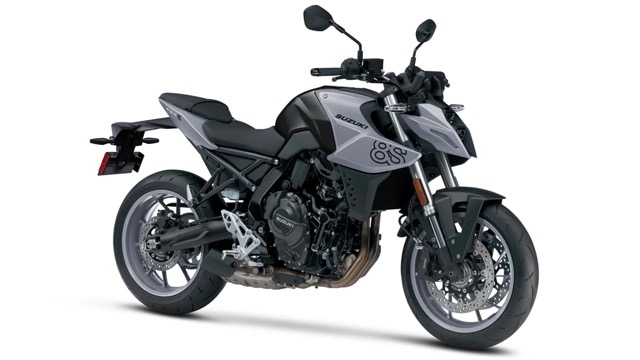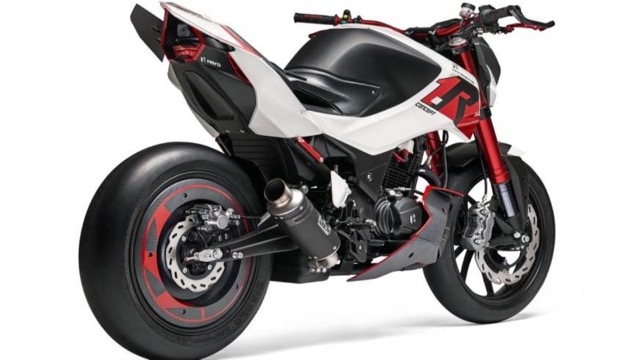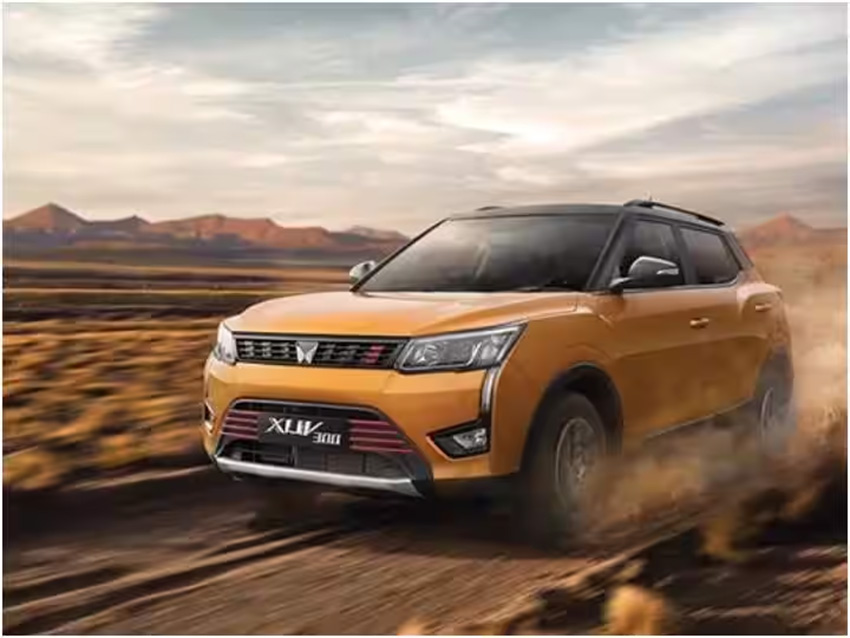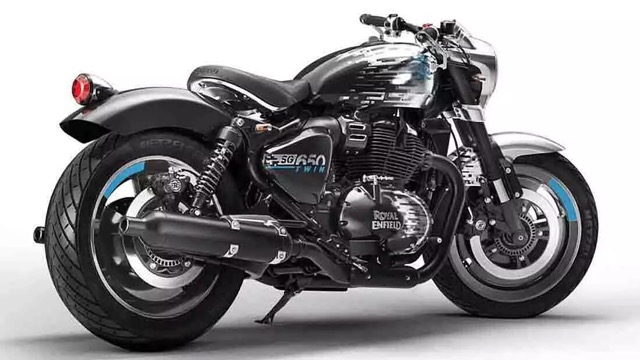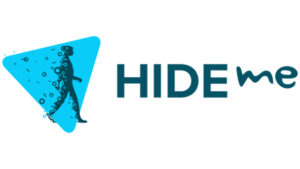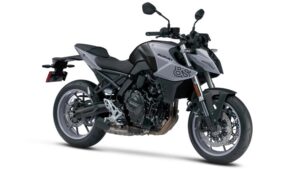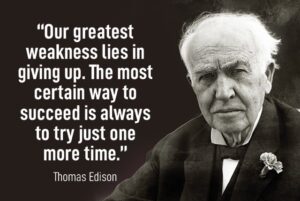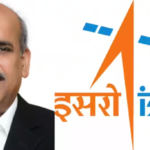What Is Uninsured Motorist Coverage? As you drive to work, pick up your children, or run errands, you may be sharing the road with drivers who do not have car insurance. According to the Insurance Research Council, approximately one in eight drivers is uninsured. It is important to understand how uninsured motorist car insurance coverage operates in order to cover medical expenses and other costs for you and your passengers in the event of an accident caused by an uninsured driver. Uninsured motorist coverage protects you if you’re hit by a driver who has no auto insurance. Underinsured motorist coverage, which is usually offered alongside uninsured motorist coverage, protects you if you’re hit by a driver who doesn’t have enough coverage to pay for the damages or injuries they caused.
Outlines Of Guide
ToggleWhat Is Uninsured Motorist (UM) Coverage?
UM or UMBI, also known as uninsured motorist coverage, is a form of car insurance that can cover medical expenses in the event of an auto accident caused by an uninsured driver, a hit-and-run, or a driver whose insurance company denies coverage or becomes insolvent. Car accidents can be stressful enough, but what happens when the other driver doesn’t have insurance? That’s where uninsured motorist coverage comes in. In this blog post, we’ll explain what uninsured motorist coverage is and why it’s essential to have it as part of your auto insurance policy. We’ll also discuss the different types of uninsured motorist coverage available and how it can protect you in the event of an accident with an uninsured or underinsured driver. So if you’re wondering if uninsured motorist coverage is worth it, keep reading to find out all the important details.
What Does Uninsured Motorist Coverage Pay For?
Uninsured motorist coverage can pay for:
- Medical bills
- Lost wages if you can’t work because of the car accident
- Pain and suffering compensation
- Funeral expenses
Some states allow the purchase of uninsured motorist property damage (UMPD), which covers your car’s damages if an uninsured driver hits you. It’s important to note that collision coverage, an optional coverage available in all states, can also pay for your vehicle damage regardless of whether the at-fault driver is insured. Underinsured motorist (UIM) insurance is a separate coverage but is sometimes bundled with UM. UIM covers medical expenses for you and your passengers if the at-fault driver doesn’t have enough liability insurance to cover your medical bills.
How Much Uninsured Motorist Coverage Do I Need?
If your state mandates uninsured motorist coverage, you are obligated to purchase at least the minimum coverage required by the state. This minimum coverage usually matches the amounts of your liability coverage. For instance, if your liability limits are $100,000 for injury to one person and $300,000 for injuries in one accident (referred to as 100/300), you should purchase 100/300 in uninsured motorist coverage.
How Much Does Uninsured Motorist Coverage Cost?
Uninsured motorist coverage costs an average of $136 a year, according to Forbes Advisor’s analysis.
| Type of coverage | Average cost per year |
|---|---|
| Uninsured motorist bodily injury (UMBI) | $136 |
| Underinsured motorist bodily injury (UIMBI) | $90 |
| Uninsured motorist property damage (UMPD) | $36 |
| Underinsured motorist property damage (UIMPD) | $46 |
Quadrant Information Services. The rates are based on uninsured motorist coverage of $100,000 per person/$300,000 per accident. It is not possible to purchase uninsured motorist coverage alone. You must also have a basic auto insurance liability policy.
How to Buy Uninsured Motorist Coverage
Some states mandate UM coverage, while others allow you to decline it in writing or may not offer it at all. Familiarize yourself with the auto insurance requirements in your state. UM coverage limits should match your liability limits. For instance, if your liability limits are 100/300 ($100,000 for injury to one person in an accident and $300,000 per accident), you must purchase 100/300 in UM coverage. Additionally, in certain states, you have the option to purchase UMPD coverage and underinsured motorist property damage (UIMPD) coverage, which protect your car in the event of a collision with an uninsured or underinsured motorist.
Steps to buying UM:
- Determine if your state requires UM coverage on your car insurance policy.
- If not required coverage, decide if you want it as optional coverage.
- If you want it as add-on coverage, match UM limits to your bodily injury liability limits.
- Decide other coverages and limits you want for your car insurance policy.
- Shop around for the best prices.
It’s a smart move to compare car insurance quotesfrom multiple companies to ensure you get all the coverage you need. One way to begin is by examining the best car insurance companies as rated by Forbes Advisor.
Breaking Down Uninsured Motorist Coverage Variations
| Insurance type | How it works |
|---|---|
| Uninsured motorist bodily injury (UM or UMBI) | Pays when an at-fault driver causes a car accident. |
| Uninsured motorist property damage (UMPD) | Covers damage to your car if it’s hit by someone without insurance. Some states allow you to use UMPD to cover hit-and-run accidents. |
| Underinsured motorist bodily injury (UIM or UIMBI) | Pays when another driver causes a car accident but they do not carry enough liability insurance to cover all your medical bills, lost wages, etc. |
| Underinsured motorist property damage (UIMPD) | Covers damage to your car if it’s hit by someone who does not carry enough liability insurance. |
Uninsured Motorist Coverage Limits
UM coverage is usually expressed as two numbers, such as 100/300. This translates to:
- $100,000 bodily injury coverage per person.
- $300,000 bodily injury coverage per accident.
So if you have 100/300 and four passengers are injured, with high medical bills, your maximum UM payout is $300,000. However, you can generally turn to health insurance after your UM coverage is exhausted.
State Laws for Uninsured Motorist Coverage
| State | Requirements for buying UM or being offered UM | Can you reject UM in writing? | Minimum UM coverage amount | Is UMPD required? If so, minimum coverage amount | UMPD deductible |
|---|---|---|---|---|---|
| Alabama | Must be offered | Yes | 25/50 | No | N/A |
| Alaska | Must be offered | Yes | 50/100 | You can reject UMPD in writing; $25,000 minimum if you buy it | $250 |
| Arizona | Must be offered | Yes, on a state-approved form | UM 25/50 | No | N/A |
| Arkansas | UM must be offered. UIM must be offered if you buy UM. | Yes | UM – 25/50 | You can reject UMPD in writing; $25,000 minimum if you buy it | $200 |
| California | Must be offered | Yes | 15/30 | You can reject UMPD coverage | If you have collision coverage, UMPD only pays the deductible not covered by collision insurance, up to $3,500. |
| Colorado | Must be offered | Yes | 25/50 | May be offered at your request | N/A |
| Connecticut | Must be offered | Yes | 25/50 | No | N/A |
| Delaware | Must be offered | Yes | 25/50 | Acceptance of UM includes UMPD; $5,000 | $250 (unless otherwise agreed in writing) |
| District of Columbia | UM is required | You can reject only UIM | UM – 25/50 | Yes; $5,000 | $200 |
| Florida | Must be offered | Yes | 10/20 | N/A | N/A |
| Georgia | Must be offered | Yes | 25/50 | Yes; $25,000 | $250, $500 or $1,000 |
| Hawaii | Must be offered | Yes | UM – 20/40 | N/A | N/A |
| Idaho | Must be offered | Yes | UM – 25/50 | N/A | N/A |
| Illinois | Required | No | UM – 25/50 | UMPD must be offered if you do not have collision insurance (you can reject in writing); $15,000 | $250 |
| Indiana | Must be offered | Yes | UM – 25/50 UIM – $50,000 | You can reject UMPD; $10,000 | Choose no deductible or a max of $300; deductible waived if your car was hit while legally parked and unoccupied |
| Iowa | Must be offered | Yes | UM – 20/40 | N/A | N/A |
| Kansas | Required | You can only reject coverage that exceeds 25/50 | 25/50 | N/A | N/A |
| Kentucky | UM must be offered; UIM is available upon request | Yes | 25/50 or a $60,000 single limit for both UM and UMPD | N/A | N/A |
| Louisiana | Must be offered | Yes | 15/30 | UMPD available but not required | $250 |
| Maine | Required | N/A | 50/100 | N/A | N/A |
| Maryland | Required | N/A | 30/60 | UMPD is required; $15,000 | $50 – $250 (options in $50 increments) |
| Massachusetts | Required | N/A | 20/40 | N/A | N/A |
| Michigan | No requirement | N/A | N/A | N/A | N/A |
| Minnesota | Required | N/A | UM – 25/50 | N/A | N/A |
| Mississippi | Must be offered | Yes | 25/50 | UMPD can be rejected; $25,000 minimum if you buy it | $200 |
| Missouri | UM required | N/A | 25/50 | N/A | N/A |
| Montana | Must be offered | Yes | 25/50 | N/A | N/A |
| Nebraska | Required | N/A | UM – 25/50 | N/A | N/A |
| Nevada | Must be offered | Yes | 25/50 | N/A | N/A |
| New Hampshire | Must be offered | You can reject UM in excess/umbrella policies only | 25/50 | Yes; $25,000 | N/A |
| New Jersey | Required on standard policies | N/A | UM – 25/50 | Yes; $5,000 | N/A |
| New Mexico | Must be offered | Yes | 25/50 | Yes; $10,000 | $250 maximum |
| New York | UM required, UIM is optional | N/A | 25/50 for injury, 50/100 for death | N/A | N/A |
| North Carolina | UM required. UIM required if UM coverage exceeds 30/60 | N/A | UM – 30/60 | Yes; $25,000 | $100 |
| North Dakota | Required | N/A | 25/50 | N/A | N/A |
| Ohio | An insurer decides whether to offer it | N/A | 25/50 | Available upon your request, not to exceed $7,500 | $250 |
| Oklahoma | Must be offered | Yes | 25/50 | N/A | N/A |
| Oregon | UM is required. UIM is required if UM coverage is more than 25/50 | N/A | 25/50 | Yes; $20,000 | $200; $300 in hit-and-run claims |
| Pennsylvania | Must be offered | Yes | 15/30 | N/A | N/A |
| Rhode Island | Must be offered | Yes | 25/50 | Not required but $25,000 minimum coverage if you buy it | $200 |
| South Carolina | UM is required | You can reject UIM | 25/50 | Yes; $25,000 | $200 |
| South Dakota | Required | N/A | 25/50 | N/A | N/A |
| Tennessee | Must be offered | Yes | 25/50 or a $60,000 single limit | Yes; $15,000 | $200 |
| Texas | Must be offered | Yes | 30/60 | Yes; $25,000 | $250 |
| Utah | Must be offered | Yes | 25/65 for UM; 10/20 for UIM | Required if you do not have collision coverage | $250 |
| Vermont | Required | N/A | 50/100 | Yes; $10,000 | $150 |
| Virginia | Required | N/A | 30/60 | Yes; $20,000 | $200 |
| Washington | Must be offered | Yes | 25/50 | Required if you don’t have collision coverage, minimum of $10,000 in coverage | $100; $300 for hit-and-run claims |
| West Virginia | UM is required; UIM is optional | N/A | 25/50 | Yes; $10,000 | $300 |
| Wisconsin | UM is mandatory | UIM can be rejected | 25/50 for UM; 50/100 for UIM | N/A | N/A |
| Wyoming | Must be offered | Yes | 25/50 | N/A | N/A |
Is Uninsured Motorist Coverage Necessary?
Uninsured motorist coverage is not mandatory in all states, which may leave some drivers wondering if they should add it to their auto insurance policy. There are a few factors to consider when making this decision. First, you should assess your own risk tolerance and financial situation. If you have significant assets that could be at risk in the event of an accident, adding uninsured motorist coverage may be a wise investment. Additionally, if you frequently drive in areas with high rates of uninsured motorists or have had past experiences with accidents caused by uninsured drivers, then adding this type of coverage can provide peace of mind and protection. Ultimately, the decision to add uninsured motorist coverage is a personal one and should be based on individual circumstances.
Do You Have Other Insurance to Cover Car Accident Injuries?
The main purpose of uninsured motorist coverage is to cover medical expenses following a car accident involving an uninsured driver. If you have comprehensive health insurance, you may not see the need for UM coverage. However, UM protection could be beneficial if you are enrolled in a high-deductible health insurance plan and would be responsible for a substantial amount of money in the event of hospitalization. Uninsured motorist insurance offers a way to address car accident injuries without having to deal with co-insurance, copays, and health insurance deductibles. UM also provides advantages that health insurance does not, such as compensation for pain and suffering, as well as lost wages. According to the National Association of Insurance Commissioners, the average payout for UM for injuries is $35,546.
Do You Have Other Insurance to Cover Car Damage?
If your state provides uninsured motorist property damage coverage, you may not require it. Collision insurance can cover damages to your vehicle caused by someone else, providing coverage for a broad range of scenarios beyond just an uninsured driver. This type of insurance covers damages caused by collisions with other vehicles or objects and is typically mandatory if you lease or finance your car. Additionally, collision insurance can help protect against theft, vandalism, and weather-related damage. However, it’s important to note that collision insurance will only cover damages up to the value of your car, so if you have an older vehicle with low resale value, it may not be worth the cost of the premiums.
Does Your State Have a Lot of Drivers Without Insurance?
The rate of uninsured drivers varies significantly across states, as reported by the Insurance Research Council. The state with the highest percentage of uninsured drivers is Mississippi, with a staggering 29.4% of motorists lacking insurance coverage. In contrast, New Jersey has the lowest rate of uninsured drivers at just 3.1%. These disparities emphasize the importance of having mandatory auto insurance laws in place to protect all drivers on the road and prevent financial hardships resulting from accidents involving uninsured motorists.
Estimated Percentage of Uninsured Drivers by State
| State | Percentage of uninsured drivers |
|---|---|
| Mississippi | 29.4% |
| Michigan | 25.5% |
| Tennessee | 23.7% |
| New Mexico | 21.8% |
| Washington | 21.7% |
| Florida | 20.4% |
| Alabama | 19.5% |
| Arkansas | 19.3% |
| District of Columbia | 19.1% |
| California | 16.6% |
| Rhode Island | 16.5% |
| Missouri | 16.4% |
| Colorado | 16.3% |
| Alaska | 16.1% |
| Indiana | 15.8% |
| Maryland | 14.1% |
| Kentucky | 13.9% |
| Oklahoma | 13.4% |
| Wisconsin | 13.3% |
| Idaho | 13.2% |
| Ohio | 13.0% |
| North Dakota | 13.0% |
| Georgia | 12.4% |
| Arizona | 11.8% |
| Illinois | 11.8% |
| Louisiana | 11.7% |
| Iowa | 11.3% |
| Kansas | 10.9% |
| South Carolina | 10.9% |
| Oregon | 10.7% |
| Virginia | 10.5% |
| Nevada | 10.4% |
| Minnesota | 9.9% |
| Hawaii | 9.3% |
| Nebraska | 9.3% |
| West Virginia | 9.2% |
| Vermont | 8.8% |
| Montana | 8.5% |
| Delaware | 8.5% |
| Texas | 8.3% |
| South Dakota | 7.4% |
| North Carolina | 7.4% |
| Utah | 6.5% |
| Connecticut | 6.3% |
| New Hampshire | 6.1% |
| Pennsylvania | 6.0% |
| Wyoming | 5.8% |
| Maine | 4.9% |
| New York | 4.1% |
| Massachusetts | 3.5% |
| New Jersey | 3.1% |
Best Home and Auto Insurance Bundles 2025
States With The Worst Drivers, Ranked
The Cheapest Car Insurance Companies
What Is Short-Term Car Insurance
What Is Non-Owner Car Insurance
Are Hit-and-Run Accidents Covered by UM?
A hit-and-run accident is commonly described as a car accident in which the driver departs the scene without sharing insurance or contact details. Such incidents can involve:
- Cars
- A car and property, like your fence or mailbox
- A car and pedestrian
Uninsured motorist insurance might provide coverage for damages in the event of a hit-and-run, depending on the state. Hit-and-run incidents are typically included in two types of uninsured motorist coverage.
Uninsured motorist property damage pays for repairs if your car or property is damaged after a hit-and-run accident.
Uninsured motorist bodily injury pays for medical bills if you’re injured in a hit-and-run accident.
Please note that UMPD is not offered in every state, and in states where it is available, it might not provide coverage for hit-and-run accidents. If your state permits UMPD coverage for hit-and-run accidents, there could be a deductible. Certain states do not permit UMPD coverage for hit-and-run accidents, but you can utilize your collision coverage to cover car repairs.
- California
- Colorado
- Georgia
- Illinois
- Louisiana
- Ohio
If you’re the victim of a hit-and-run, here are some steps you can take:
- Pull over in a safe area. Make sure you and your passengers are OK. It’s not a good idea to chase the other driver.
- Record as many details about the accident as possible. Even if you didn’t get a look at the license plate, a description of the car (make, model, color) and driver can help during the insurance claim process. You want to take note of the time and location of the accident and get the contact information from any eyewitnesses.
- Call the police.
- Take photos of your car damage and the scene.
- Call your insurance company.
Should I Buy UM Coverage for Property Damage?
Unless your state requires UMPD coverage, you probably don’t need it if you already have collision insurance. That’s because collision coverage pays for damage to your car no matter who caused the accident. UMPD only pays in certain cases, although it may come with a lower deductible than what you chose for a collision deductible.
The average claim payment for UMPD is $2,104, according to the National Association of Insurance Commissioners.
How Do I Make an Uninsured Motorist Claim?
If you’re in a car accident and the at-fault driver doesn’t have any or enough liability insurance, contact your car insurance company and file a claim under your uninsured motorist coverage (provided you have coverage).
Here are examples of how to make an uninsured motorist claim.
You’re at a Stop Light and Rear-Ended by a Driver Who Doesn’t Have Insurance.
- Since the at-fault driver doesn’t have insurance, file a UM claim with your car insurance company.
- You would make a claim under your uninsured motorist bodily injury (UMBI) coverage for your medical expenses and your uninsured motorist property damage (UMPD) coverage, if you have it, for damage to your vehicle.
You’re a Pedestrian in a Crosswalk and Hit by a Driver Who Does Not Have Enough Liability Insurance to Cover All of Your Medical Expenses.
- Make a claim with the at-fault driver’s car insurance company, or sue the driver, and get reimbursement from their liability insurance.
- You could then file a claim with your own car insurance company under your underinsured motorist bodily injury (UIMBI) to cover the balance of your medical bills, if the other driver’s insurance was used up.
Your Vehicle Is Parked in a Public Parking Garage. You Find it Has Been Hit and Damaged, but the Other Driver Didn’t Leave Their Information.
- In this hit-and-run scenario, you could file a claim under your UMPD coverage (if your state allows hit-and-run claims under UMPD insurance).
- If you don’t carry UMPD or your state doesn’t allow you to use it for hit-and-runs, you can file a claim through your collision coverage. (Your collision deductible will apply to a collision claim.)
Understand the Payout From an Uninsured Motorist Claim
It is important to have a clear understanding of the typical process for uninsured motorist claims to avoid being caught off guard by a lower payout than anticipated. When filing a claim under your underinsured motorist coverage, the payment is decreased by the sum you have already received from the other driver’s liability insurance. For instance:
- Let’s say you have $100,000 of UIM coverage and you receive $50,000 from the other driver’s liability insurance, and your total medical bills are $300,000.
- Your UIM coverage would likely only pay out $50,000 ($100,000 UM – $50,000 at-fault driver’s liability), meaning $200,000 wouldn’t be covered.
- You generally don’t get your full UIM limit ($100,000) plus the driver’s liability coverage ($50,000).
- In this scenario, you might be expecting $150,000 total from insurance and receive only $100,000.
Some states, including Connecticut, have specific provisions. In Connecticut, drivers have the option to obtain UM “conversion” coverage, ensuring that their UIM payout remains unaffected by the liability insurance of an at-fault driver. For instance, a driver with conversion coverage in the aforementioned accident scenario would receive the full UIM amount ($100,000) in addition to the liability payout from the other driver ($50,000), totaling $150,000. In contrast, states like Georgia provide drivers with a choice. Georgia drivers can opt for “uninsured motorist coverage—added on to at-fault liability limits.” Alternatively, they have the option to decline this in writing and instead choose “uninsured motorist coverage—reduced by at-fault liability limits.”
What Does it Mean to “Stack” Insurance?
Stacked insurance refers to the practice of filing claims on multiple uninsured motorist policies. This method enables individuals to receive additional insurance coverage for medical expenses resulting from car accidents. It’s important to note that stacking is not permitted in all states, and certain car insurance providers may have an “anti-stacking provision,” restricting the ability to file multiple UM claims for a single accident.
If you can stack insurance, there are usually two ways to do this:.
- Stack coverage for two vehicles that are insured under one policy.
- Stack coverage for two vehicles that are insured under two policies in your name.
Here are examples of how stacking might work.
Stacking Insurance Within One Policy
Suppose you have insurance for two cars under one policy, each with $100,000 in uninsured motorist bodily injury coverage. If an uninsured driver injures you in an accident involving one of your cars, you have the option to combine the coverage and seek up to $200,000 in benefits.
Stacking Insurance From Two Policies
Consider this situation where you have insurance for two cars under two different policies, each with $100,000 in uninsured/underinsured motorist coverage. If you get injured in an accident caused by an uninsured driver hitting one of your cars, you can combine the UM benefits from both policies, up to a total of $200,000. It’s important to note that both policies need to be under your name.
- Stacking usually involves paying a higher amount, and you must choose to stack when purchasing or renewing a policy. It is not possible to add or utilize stacking after an accident.
- UM coverage applies to car accidents caused by other parties. If you are involved in a car accident that was your fault, you are not eligible to receive any UM benefits or combine coverage.
Here’s what to do if you’re making a claim by stacking uninsured motorist coverage:
- In the event of being injured in a car accident involving an uninsured driver, you would file a claim under your own UM coverage to cover medical expenses. If this coverage is insufficient, you can utilize UM coverage from another vehicle you own or from a separate car insurance policy in your name.
- In the event of being injured in a car accident where the at-fault driver’s liability insurance does not fully cover medical expenses, the process involves making a claim with the other driver’s insurance, followed by accessing your own UIM coverage once the maximum payout is reached. If necessary, additional UIM coverage from another vehicle or insurance policy in your name can be utilized.
Summary
Uninsured motorist coverage is an essential component of auto insurance that provides protection in the event of an accident with an uninsured or underinsured driver. This coverage helps cover medical expenses, property damage, and other costs that may arise from such accidents. By having uninsured motorist coverage, you can have peace of mind knowing that you are financially protected even if you encounter a driver who does not have sufficient insurance. It is crucial to review your policy and ensure that you have adequate coverage to safeguard yourself and your assets on the road. Stay protected and drive with confidence by including uninsured motorist coverage in your auto insurance policy.
What Is Uninsured Motorist Coverage? Faqs
Do I need uninsured motorist coverage if I have health insurance?
If your state mandates uninsured motorist coverage, you must have it regardless of whether you have health insurance. In states without this requirement, it may not be necessary if you have comprehensive health insurance coverage, but it’s worth contemplating if you have high deductibles, copays, and co-insurance. Uninsured motorist coverage can be beneficial for expenses such as lost wages, pain, and suffering, which are not covered by health insurance.
What does uninsured motorist coverage pay for?
If you get hit by someone who doesn’t have auto insurance, uninsured motorist coverage pays for your medical bills, lost wages, pain and suffering and funeral expenses. In some states, uninsured motorist coverage will also cover your car damage.
What’s the difference between uninsured motorist (UM) coverage and underinsured motorist (UIM) coverage?
Uninsured motorist coverage pays for your medical bills and other expenses when you’re hit by someone who doesn’t have auto liability insurance. Underinsured motorist coverage pays for medical bills and other expenses when you’re hit by someone who doesn’t have enough insurance.
What happens if I don’t have uninsured motorist coverage?
If you lack uninsured motorist coverage and get into an accident with an uninsured driver, you may need to take legal action against the responsible party. This could involve hiring a lawyer and enduring a lengthy legal process. Uninsured motorist coverage not only covers medical expenses but also compensates for lost wages, pain and suffering, and funeral expenses. Relying on your insurance company to handle medical bills is generally more convenient than pursuing legal action.










